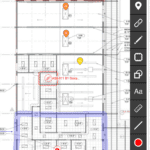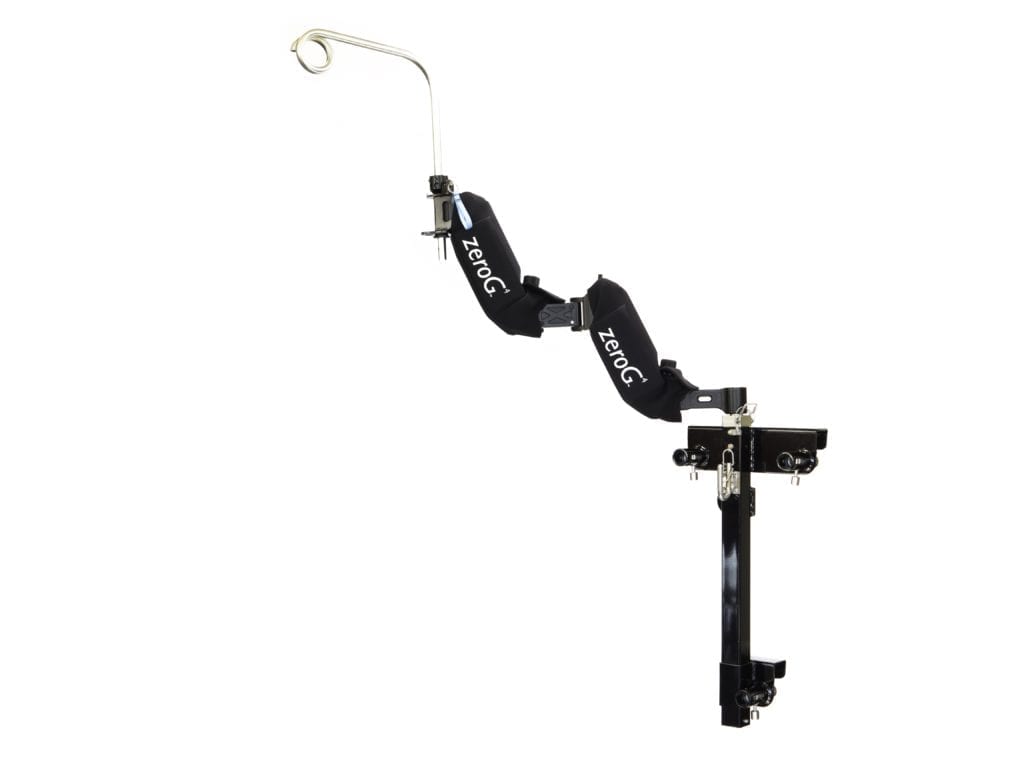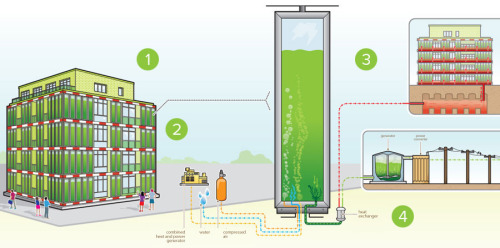Insight
Published and updated
Top 10 Construction Tech Trends of 2017
Some of the construction tech trends we’re watching this year are closely related to tech trends we started watching in 2016 (mobile apps and big data). Others have been percolating for a few years now (thermal imaging and cloud computing), and we expect big advances this year. And others are just plain cool (holographic headsets and construction exoskeletons), and we want to see if they’ll make it into the mainstream this year.
Cloud Computing
The cloud isn’t new to industry tech trends lists, but it’s lining up to have a huge impact on the construction industry in 2017. Many of the other tech trends discussed in this article would not be possible without the cloud. It’s compulsory for big data, mobile applications, virtual reality design and the Internet of Things.
The “cloud” consists of storage and computing resources that your device (smartphone, tablet or PC) can only access via a network connection (wi-fi, cell service, Internet, etc.). Most construction companies have either demoed or rolled out file sharing applications like Dropbox or Google Drive to make it easier for workers, contractors, clients, regulators and any other interested parties to access designs, permits and other documents. But file sharing is just the beginning of how the construction industry will take advantage of the cloud.
According to Dexter + Chaney President and CEO Norbert Orth (as told to Construction Executive): “Cloud-enabled and mobile friendly, the industry’s next generation of software will help contractors realize two important things: a more streamlined and timely flow of information between the office and the jobsite, and the delivery of more powerful information tools into the hands of the folks who need them in the field.”
Big Data
“Big data” is simply that: supremely large amounts of related information. The trend centers around using algorithms to extract meaningful insights from these sometimes unstructured data ‘dumps’; insights that help companies make better decisions about how they can work more safely, productively and efficiently.
Where is all this information coming from? Digital video, sensors, building information modeling (BIM), enterprise resource planning (ERP) software, wearables and other technologies produce massive amounts of data.
Technology companies see opportunity in the construction industry to use data sources such as digital designs, materials receipts and video inspections for big data analytics. They write an algorithm to retrieve and organize the data, and then produce predictive analytics or business intelligence that you or your competitors are willing to pay handsomely for.
Builders are already seeing big data results in the form of more sophisticated software, increased mobility, stronger designs, faster builds and longer-lasting structures.
Mobile Apps

About the only tool that construction industry professionals of all levels use every day is a cell phone (one of 1998’s tech trends?). Tablets are becoming more popular on the jobsite and you can almost always find at least one laptop there. Thanks to the cloud and faster mobile and Wi-Fi networks, increased mobility and agility keep the construction industry humming. And I’m not just talking about phone calls and text messages.
Mobile apps for time tracking, estimating, invoicing, design, material ordering, printing, collaboration, drone control, resource tracking and just about everything else except the actual building are growing in popularity. Nearly 80 percent of construction industry professionals who participated in a JBKnowledge survey dubbed mobile applications as important or very important. To keep from overwhelming you with too many different applications, look for the industry to consolidate or at least collaborate to integrate multiple functions in fewer apps.
Virtual Reality Design
Last year we mentioned BIM as one of the tech trends to follow, and it continues to trend upward. The next step in 3-D modeling is to actually inhabit the model. Currently, the most common way to view 3-D models is on the 2-D screen of a tablet or laptop. Designers and builders can get more value out of the model when they’re able to fully immerse themselves in it.
Companies such as IrisVR specialize in converting 3-D plans into a virtual reality (VR) experience. According to this article in GeekWire, “Where the technology really has the potential to make a difference in the industry…is in planning complex medical and industrial projects.”
Other large marquee projects will also start using more VR design. In a recent Construction Dive article, Aaron White of structural engineering firm Walter P. Moore said of designing stadiums, “We’d like to start using VR modeling of de-shoring the tower headers before we send workers up 150-foot towers.” The VR environment would improve safety and efficiency, allowing workers to determine which tools they will actually need to complete a project.
Holographic Headsets
VR headsets such as Google Cardboard, Oculus Rift, Gear VR or HTC Vive will immerse you in a fantastic virtual world and work well with virtual design. However, if you want to overlay and interact with models and designs in a real-world environment—known as “mixed reality” or “augmented reality”—then you need a holographic headset.
DAQRI Smart Glasses and Microsoft Hololens (watch the video to see how mixed reality works) are leading the charge into designing with holograms.
The biggest advantage is that you can design and make alterations in the physical environment where you’ll be building. Although still in their infancy, using holographic headsets in augmented reality could offer real benefits in the form of faster builds with fewer mistakes, resulting in substantial cost efficiencies for builders.
Thermal Imaging
The construction industry has been using infrared technology for years. In the late 20th century, thermal imaging became affordable enough that you didn’t need a department of defense line item to buy a camera. Now, you can add thermal imaging to your smartphone for $249.99. Major players FLIR and Fluke continue to expand on form factors and applications for the construction industry.
Construction Equipment recently ranked the CAT S60 smartphone second on their list of “The 5 Best Smartphones for Construction [2017 Edition]” because “marquee features for this phone are its extreme durability and its built-in FLIR thermal camera.”
Thermal imaging gives builders a non-intrusive means of locating moisture to pinpoint water leaks; identifying electrical hotspots, structural defects, plumbing clogs and HVAC issues; and diagnosing missing insulation, roofing issues and air leakage.
Construction Exoskeleton
We’re probably a few years away from having Optimus Prime on the jobsite, but unpowered exoskeletons are ready to roll now. Expect major financial returns in productivity and fewer exertion-related injuries as exoskeletons gain industry acceptance as safety and productivity tools.
The thinking behind exoskeletons is to help construction workers perform difficult tasks using heavy equipment for longer periods of time but with less physical exertion. Ekso Bionics is one of the early entries into this market. Their solutions “reduce the stress and strain of high-frequency and long-duration activities that take a toll on your body over time.”

Unpowered exoskeletons use counterweights, metal tubing and a harness to transfer the weight of a heavy tool down through the suit into the ground. They’re more applicable to the construction industry because they offer freedom from power sources and cost less to buy and maintain.
A 2016 Arcluster Market Analysis predicts growth in the overall exoskeleton market, which included military and medical uses as well as construction, to grow from $225.3 million in 2016 to $3.75 billion by 2021.
Engineered Living Materials
“Living biological materials—bone, skin, bark, and coral, for example—have attributes that provide advantages over the non-living materials people build with, in that they can be grown where needed, self-repair when damaged, and respond to changes in their surroundings.” (DARPA)
Bone and skin? Relax, Hannibal Lecter didn’t get his general contractor’s license.
The Defense Advanced Research Projects Agency (DARPA) envisions worksites seeded with engineered living materials (ELM) that—when used in buildings—will be able to respond to the environment and repair themselves when damaged. Cardiff University in Wales and University of Victoria in British Columbia are racing towards a viable self-healing concrete. BioMason can grow bricks like coral in four days. Pigmented organisms and algae are being developed to control temperatures and air quality in buildings.

Autonomous Equipment
The only surefire way to protect drivers from being hurt or killed in an accident is to remove them from the equation. Today, operators may be closer to changing their job title to ‘remote control pilot’ than you think.
Royal Truck & Equipment builds driverless trucks that are being used at highway construction sites in Florida. Cat® Command can automate hauling, dozing and drilling. Volvo Construction Equipment is experimenting with autonomous technology in its L120 wheel loader and A25F articulated hauler. Self-driving vehicles are also in the early developmental phases for mining and agriculture.
We’re still years away from it being commonplace to see self-driving heavy equipment on the jobsite. But the benefits of increased safety, higher productivity, greater fuel efficiency, and being able to hire less experienced operators/controllers who can depend on equipment automation are real enough for all major equipment manufacturers to explore what’s possible.
Internet of Things
Everyday construction workers probably don’t consider themselves to be integral to the development of artificial intelligence. Nevertheless, they’re at the core of the proliferation of the Internet of Things (IoT). The IoT refers to a sensor or group of sensors that collects and transfers data via wired or wireless network to a platform where it’s instantly acted upon, or to the cloud where it’s combined with other data to produce actionable insights. In other words, the IoT is the “smart” in “smart buildings” or “intelligent” in “intelligent machines.”
Construction workers at every level are already exposed in the IoT. Heavy equipment includes sensors that automatically provide information on diagnostics, fuel usage, machine hours and more. Workers wear safety sensors to monitor air quality and biometrics. RFID tags track materials and tools.
In 2017, builders will need to get up to speed on how to incorporate sensors and networks into design and construction plans. Modern lighting systems can detect whether a person is in the room using motion or thermal sensors. Other sensors in buildings help with ongoing maintenance. Sensors on roads and bridges monitor traffic patterns, detect accidents and diagnose structural weaknesses. Combined with engineered living materials, buildings of the future will be living, intelligent structures.
How many of these tech trends are already live at your jobsite? Share you tech trends @SoneticsCorp.
2016 Tech Trends Updates
While it’s going to take a year to see how the 2017 tech trends play out, we thought we’d update you on the trends we reviewed last year:
- Remote surveillance: Check out these new theft prevention solutions at Construction Equipment. Most are designed for remote surveillance.
- Drones: Here are some of the latest construction applications from Construction Executive.
- Wearables: Yet another application where the cloud is mandatory.
- BIM: It’s not just for large-scale builders anymore.
- Unified Communications: Another trend that depends on the cloud…
- 3-D printing: Still much promise but actual practice remains foggy.
- Digital documentation: 92% growth for one firm in 2016.
- Vehicle-Mounted Cameras: How about a public video stream accessible to anyone?
- Mobile Field Service Software: Still growing at a CAGR of 11.3% until 2020.
- Business Intelligence: A byproduct of big data, business intelligence will continue to grow in parallel with the cloud and IoT.